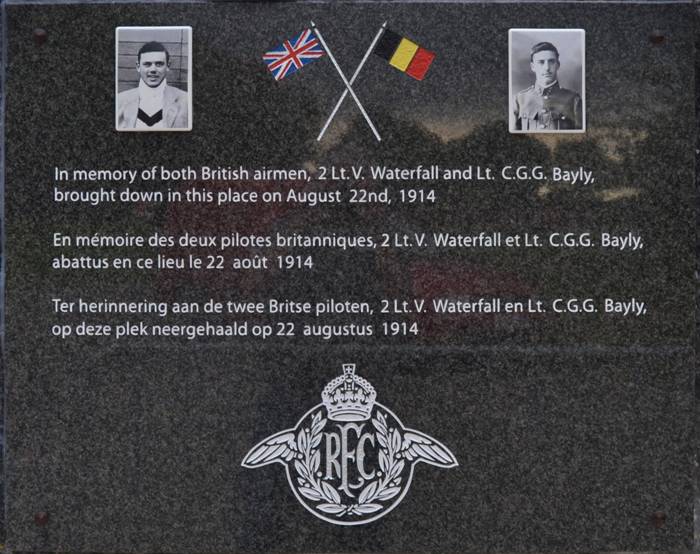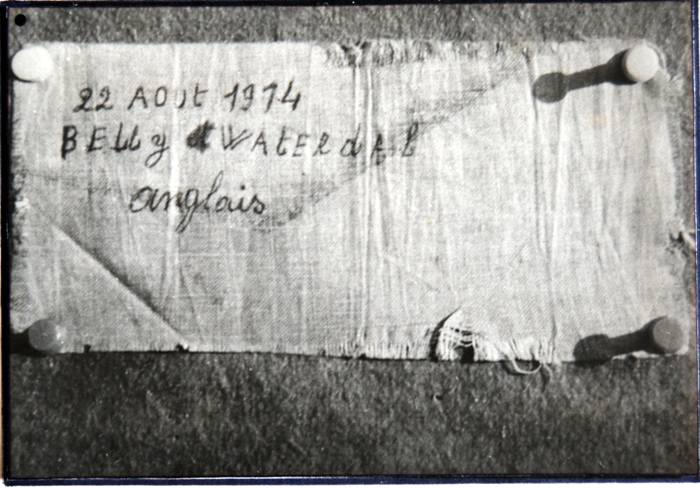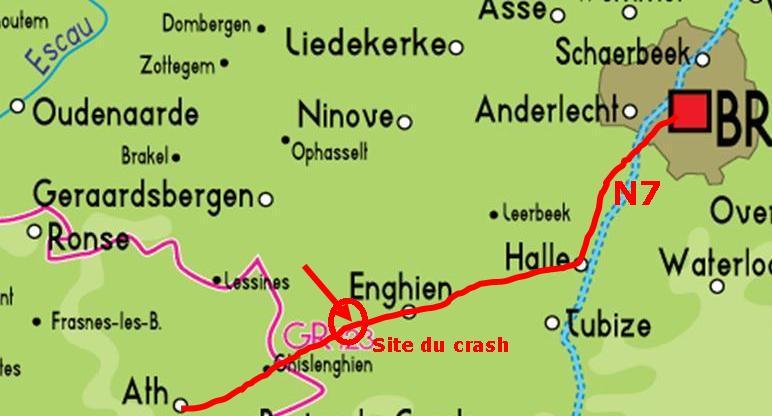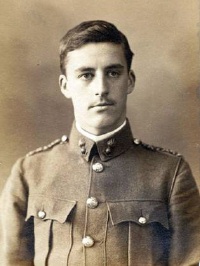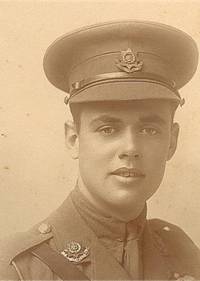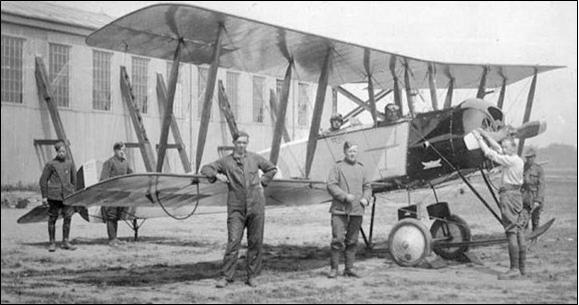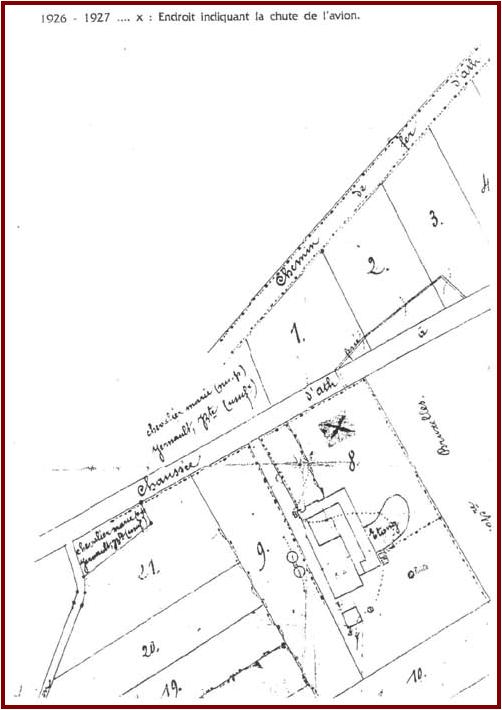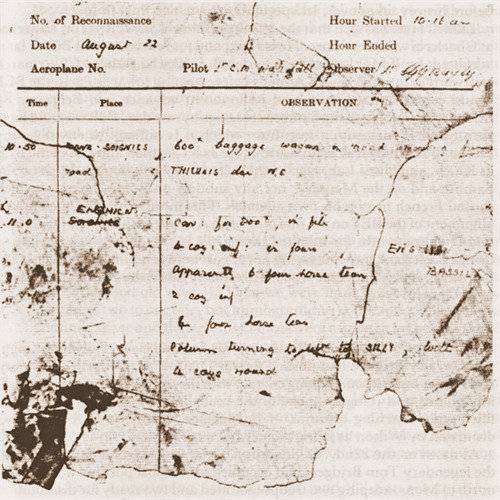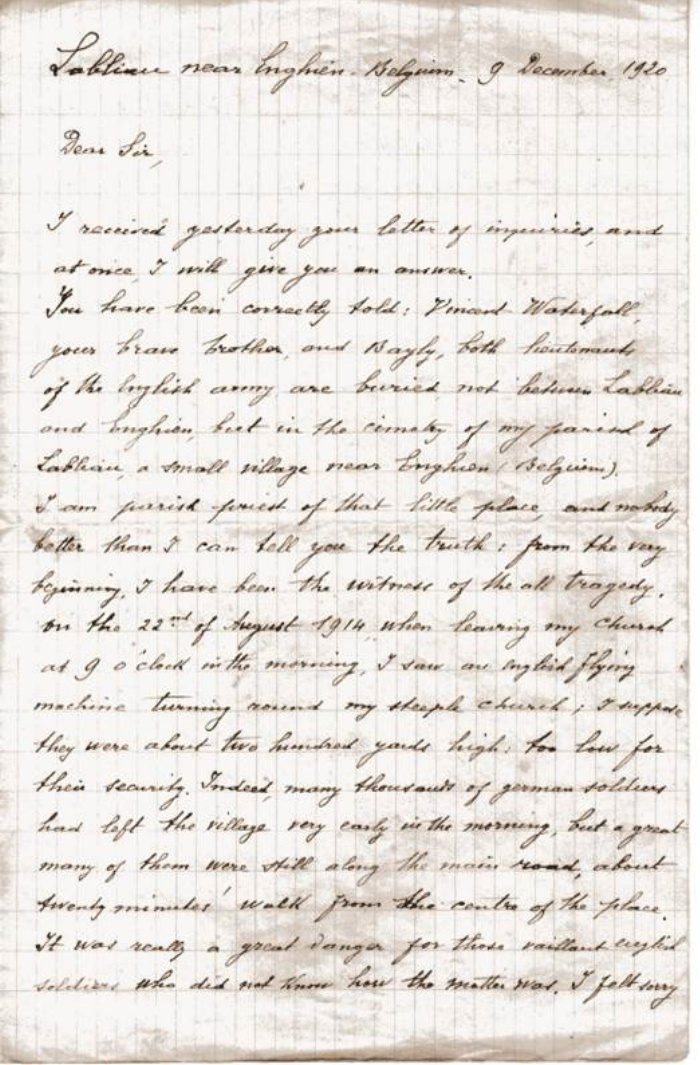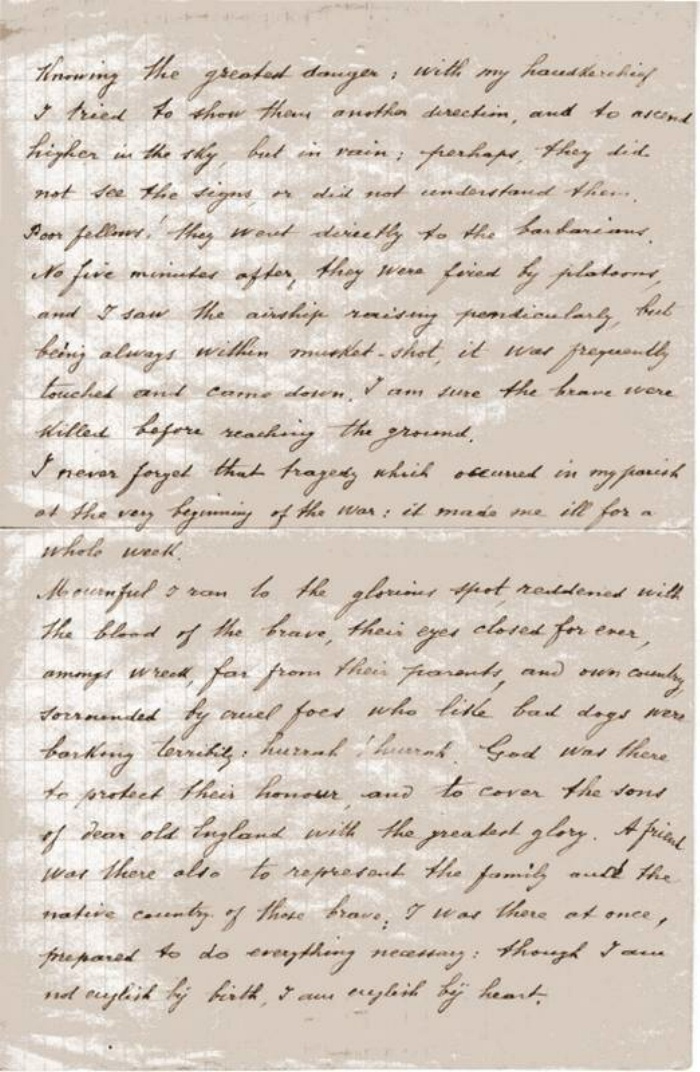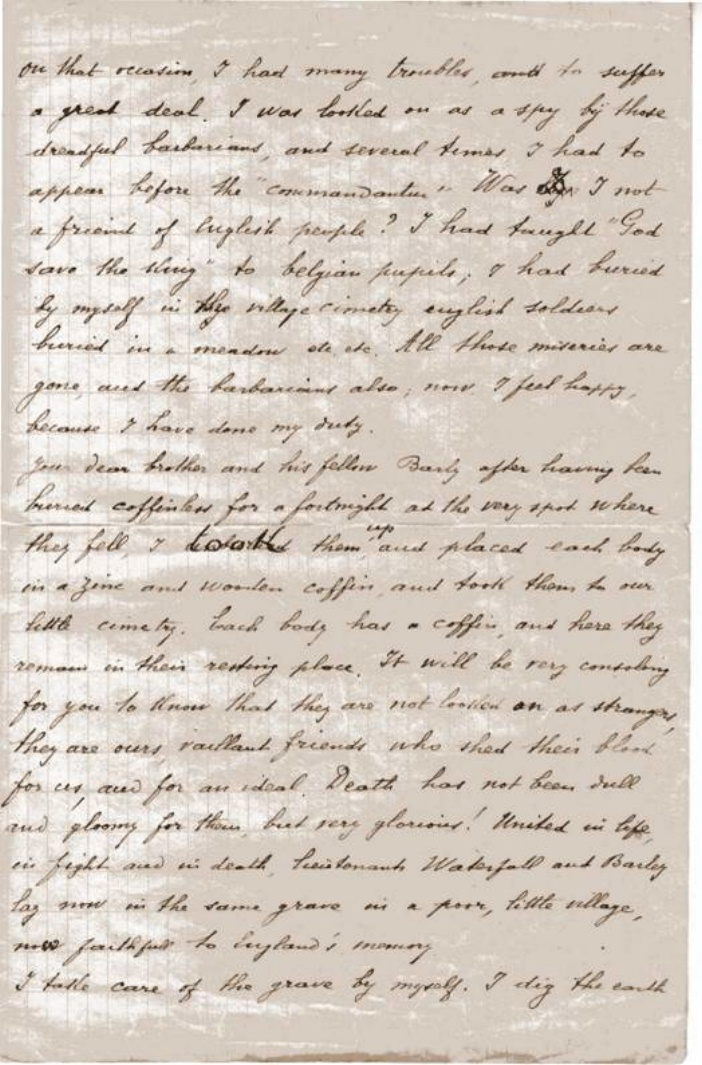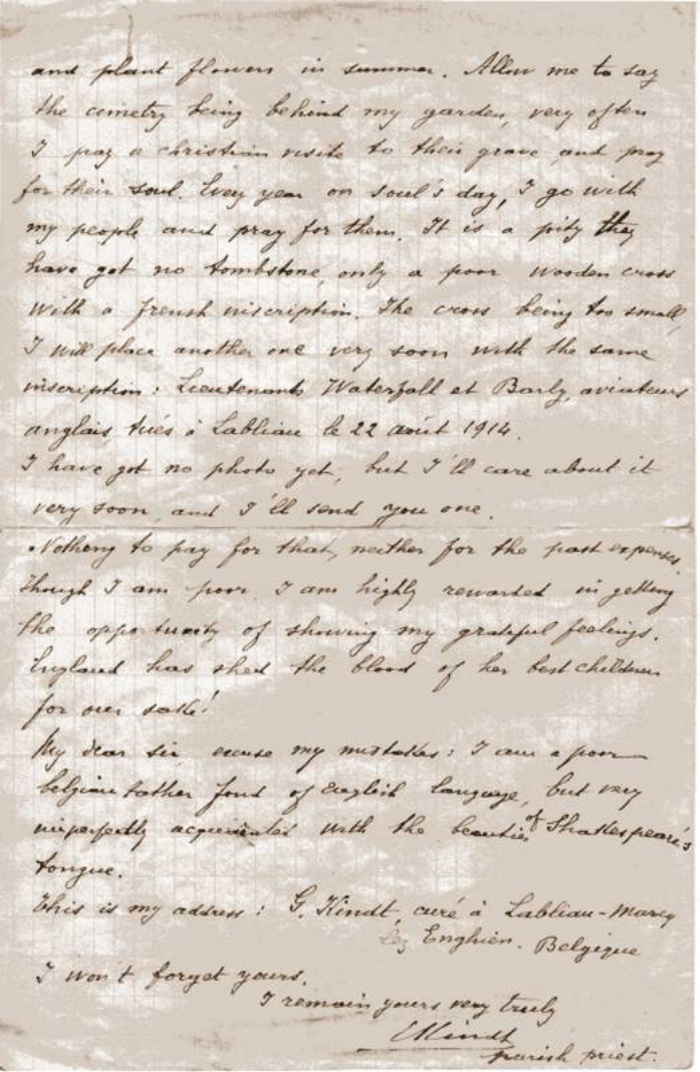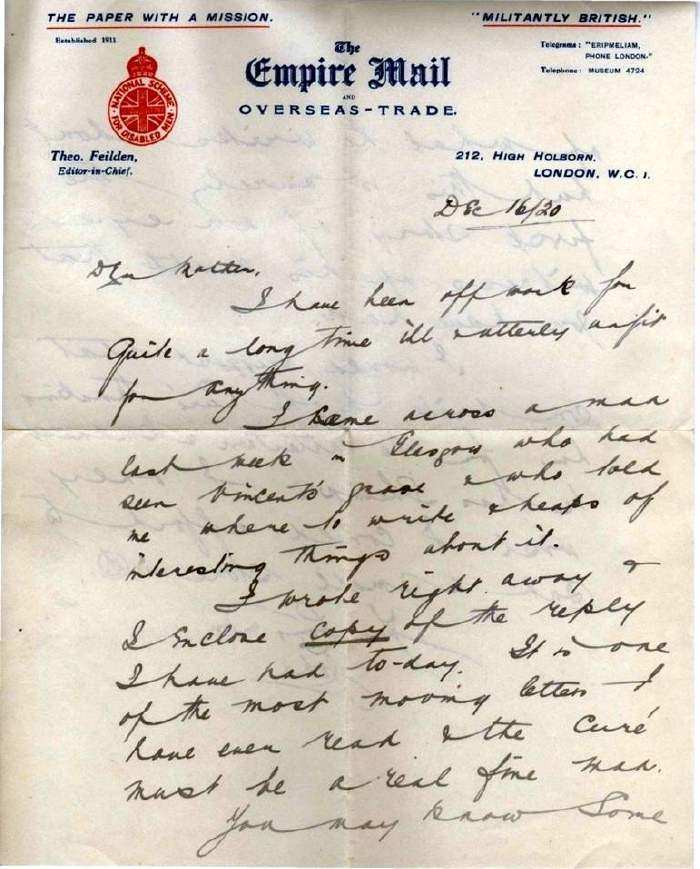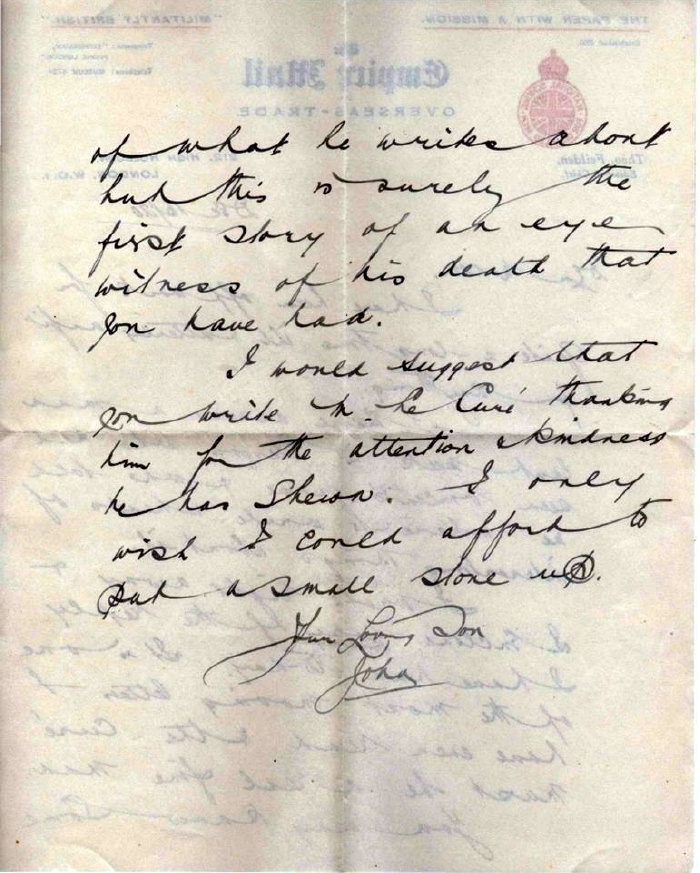On 22 August 1914, an Avro 504, number 390, crewed by Charles Bayly and Vincent Waterfall, failed to return from its reconnaissance mission.
They took off at 10:16 and at around 10:50 from ah airfield to Maubeuge (France) for a mission of reconnaissance. The aircraft was over the Enghien area, on the road going from Enghien to Ghislenghien, over the village of Marcq when they were aimed by German soldiers staying on ground.
The pilots had observed several German military convoys formed of infantry troops and equipment. The plane made a first passage at very low altitude, just twenty-odd metres, causing such a surprise effect that the Germans failed to fire a single shot at the target, such an easy one in view of the low altitude and the slow speed. The plane turned around and returned towards one of the columns… the reception was different. The plane, now a target, was unable to escape the enemy fire and crashed by the side of the road, in a field.
Both occupants were killed. They were first two of the british victims, killed in an air accident in Belgium, during the World War I.
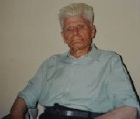 Hector Durant,
âgé de 90 ans |
A young 14-year-old worker, Hector Durant, was on the spot of the drama and was the witness of all the scene. He was next to a cart of oat to prevent the Germans from seizing it.
After the crowd caused by the accident had dissipated, he took opportunity that nobody looked at him to cut a piece of the canvas covering the plane. Here below, the picture of it.
The bodies were quickly buried on the spot by the Germans, but they were dug up a little later by G Kindt, the priest of the parish of Labiau, a hamlet of Enghien, close of
the place of the accident, placed in zinc coffins, in vault of the local cemetery. The priest taken care of the grave of both airmen until 1924, when the Commission for the grave of
the British servicemen fallen to the fights took the coffins away of the transfer them, for to be buried them in the Allied extension, of the cemetery of the city of Tournai,
Hainaut, Belgium, grave reference G.3 & 4, where they always rest. |
Le 22 août 1914, l’Avro 504 n° 390, ayant à son bord Charles Bayly et Vincent Waterfall n’est pas revenue de mission.
Les pilotes avaient décollé à 10h16 de l’aérodrome de Maubeuge (France) pour une mission de reconnaissance.
L’avion était dans la région d’Enghien, au-dessus de la route Enghien-Ghislenghien, à la hauteur du village de Marcq, lorsqu’il a été pris pour cible par des soldats allemands depuis
le sol. L’équipage avait repéré des mouvement de troupes allemandes et des convois de matériel. L’avion fit un premier passage à très basse altitude, environ une vingtaine de mètres,
causant une grande stupeur chez les Allemands. Ils furent si surpris qu’ils ratèrent leur cible, pourtant à portée de leurs fusils. L’avion refit un second passage, mais les Allemands
avaient eu le temps de se ressaisir, et là, leur tir atteignit l’appareil, qui s’écrasa dans une prairie, proche de la route.
Les deux occupants de l’appareil furent tués. Ils furent deux des premières victimes britanniques, tuées dans un accident aérien en Belgique, lors de la première guerre mondiale.
Un jeune ouvrier de 14 ans, Hector Durant, se trouvait sur les lieux du drame et a été le témoin de toute la scène. Il se trouvait à côté d'une cargaison d'avoine afin d'empêcher les Allemands de s'en emparer.
Après que l'attoupement causé par l'accident se fut dissipé, il profita que personne ne le regardait pour découper un morceau de la toile couvrant l'avion. Ci-dessous, la photo de cette pièce de tissus.
 L'église Ste-Anne
à Labiau |
Les corps furent rapidement enterrés sur place par les Allemands, mais ils furent exhumés un peu plus tard par
G. Kindt, le curé de la paroisse de Labiau, un hameau d'Enghien, proche du lieu de l'accident, placés dans des cercueils en zinc,
dans un caveau du cimetière local. Le prêtre pris soin de la sépulture des deux aviateurs jusqu'en 1924, quand la Commission pour la sépulture des militaires britanniques tombés au
combat s’est chargée du transfert du corps des deux pilotes, afin de les enterrer dans la parcelle britannique du cimetière de la ville de Tournai, où ils reposent toujours.
|
( *Ci-dessous, vous trouverez l'original de la lettre du curé de Labiau envoyée à John Waterfall, frère de Vincent, dans laquelle, il lui fait part de son témoignage, ainsi que
la lettre que John écrit à sa mère en lui disant qu'ils ont, par le récit du prêtre, le témoignage de ce qui s'est réellement passé, lors de l'accident.)
( * Here below, you will find the original of the letter of the priest of Labiau sent to John Waterfall, brother of Vincent, in which, it announces him its testimony, as well as the
letter that John writes to her mother by telling her that they have, by the narrative of the priest, the testimony of what really happened, during the acident.)
* L'idée d'ériger un monument à la mémoire des deux aviateurs fut, à l'origine celle de Monsieur Louis Darbé, un habitant de la commune d'Enghien, qui voici plus de 20 ans, a entrepris des
recherches historiques et a tenté par tous les moyens que le sacrifice des deux jeunes pilotes britanniques ne tombe pas dans l'oubli. Il a fallu 100 ans pour que l'on s'en rappelle! Mieux vaut tard que jamais...
* The idea to set up a monument to the memory of both airmen was, originally that of Mister Louis Darbé, an inhabitant of the municipality of Enghien, who here is more than 20 years,
began historic researches and tried by all means that the sacrifice of two young British pilots does not sink into oblivion. One hundred years were needed so that we remember it ourselves! Better late than never...
The Royal Flying Corps (RFC) was the air arm of the British Army during the First World War, until it merged with the Royal Naval Air Service on 1 April 1918 to form the Royal Air Force.
During the early part of the war, the RFC supported the British Army, by artillery co-operation and photographic reconnaissance.
Two of the first three RFC squadrons were formed from the Air Battalion of the Royal Engineers. By the end of March 1918, the Royal Flying Corps comprised some 150 squadrons.
La Royal Flying Corps (RFC) a été le bras aérien de l'Armée britannique pendant la Première guerre mondiale, jusqu'à ce qu'il se soit associé avec le Royal Naval Air Service, le 1 avril 1918 pour former la Royal Air Force.
Pendant la première partie de la guerre, le RFC a soutenu l'Armée britannique, par la coopération avec l'artillerie et la reconnaissance photographique.
Deux des trois premiers escadrons RFC ont été formés du Bataillon Aérien du Génie militaire britannique.
A la fin mars 1918, le Royal Fying Corps comprennait quelques 150 escadrilles.
We will remember them! - Nous nous souvenons d'eux!
Sources:
Few pictures are provided by membres of the Vincent's family. - Thanks to them.
Some pictures were provided by Alan Seymour; other informations here, on Western Front Association web-site
- Commonwealth War Graves Commission website.
Traces of War web site
Médecins de la Grande Guerre, par Dr F. Loods
Association du mémorial de Rebecq
Monsieur Louis Darbé, Marcq-Enghien
Des renseignements peuvent être trouvés sur le site "Enghien, le saviez-vous?"




